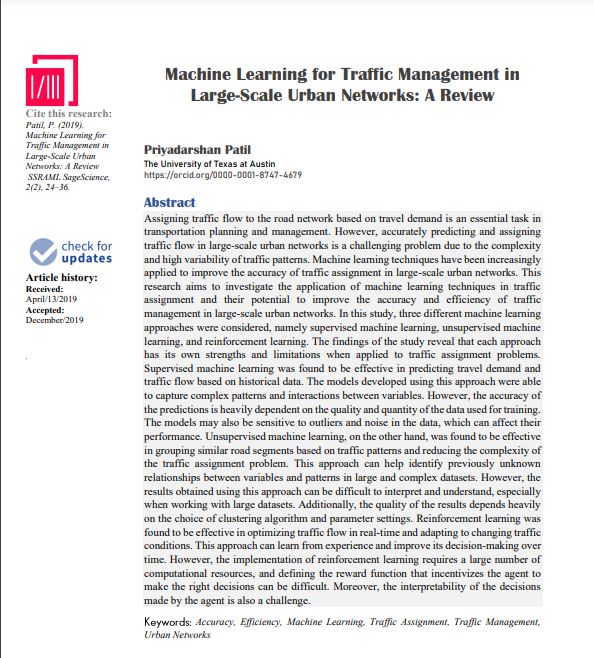Machine Learning for Traffic Management in Large-Scale Urban Networks: A Review
Keywords:
Accuracy, Efficiency, Machine Learning, Traffic Assignment, Traffic Management, Urban NetworksAbstract
Assigning traffic flow to the road network based on travel demand is an essential task in transportation planning and management. However, accurately predicting and assigning traffic flow in large-scale urban networks is a challenging problem due to the complexity and high variability of traffic patterns. Machine learning techniques have been increasingly applied to improve the accuracy of traffic assignment in large-scale urban networks. This research aims to investigate the application of machine learning techniques in traffic assignment and their potential to improve the accuracy and efficiency of traffic management in large-scale urban networks. In this study, three different machine learning approaches were considered, namely supervised machine learning, unsupervised machine learning, and reinforcement learning. The findings of the study reveal that each approach has its own strengths and limitations when applied to traffic assignment problems. Supervised machine learning was found to be effective in predicting travel demand and traffic flow based on historical data. The models developed using this approach were able to capture complex patterns and interactions between variables. However, the accuracy of the predictions is heavily dependent on the quality and quantity of the data used for training. The models may also be sensitive to outliers and noise in the data, which can affect their performance. Unsupervised machine learning, on the other hand, was found to be effective in grouping similar road segments based on traffic patterns and reducing the complexity of the traffic assignment problem. This approach can help identify previously unknown relationships between variables and patterns in large and complex datasets. However, the results obtained using this approach can be difficult to interpret and understand, especially when working with large datasets. Additionally, the quality of the results depends heavily on the choice of clustering algorithm and parameter settings. Reinforcement learning was found to be effective in optimizing traffic flow in real-time and adapting to changing traffic conditions. This approach can learn from experience and improve its decision-making over time. However, the implementation of reinforcement learning requires a large number of computational resources, and defining the reward function that incentivizes the agent to make the right decisions can be difficult. Moreover, the interpretability of the decisions made by the agent is also a challenge.




